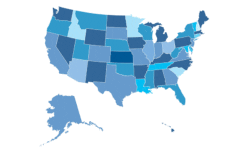Selecting the Right Security Technology for Your School
Although campus security professionals and administrators may feel pressured to implement security technologies that will win the vote of public approval, they must resist this temptation and select the solutions that yield the best possible results.

So many risks surround K-12 campuses, from accidents and natural disasters, to threats that come from within the school walls. For all of these reasons, school officials must understand their risks, select the right technologies and implement the best policies and resources to ensure a safe learning environment.
Conduct a Risk Assessment and Prioritize
Before putting in place any security tool or policy, the SRO or security director should conduct an objective and comprehensive assessment of risks and needs. This can be particularly challenging with schools because their actual needs may be confused with perceived needs.
One example that may hit close to home is the rush by many campuses to purchase emergency notification systems right after the 2007 Virginia Tech tragedy. While these solutions may well have been great for some institutions, they may not be appropriate or the top priority for schools with a less sophisticated security program. Yet emergency notification systems were the subject of much media attention at the time and were touted as the latest and greatest, not as one element of a comprehensive security program.
School officials should evaluate their security needs and prioritize problem areas. There are numerous reasonably priced assessment tools that can help schools identify the most critical issues. A simpler approach may be for administrators to just outline their goals and, based on their school’s history of security incidents, determine their top priorities and develop a road map.
Leverage the IT Network for Physical Security
Sometimes schools have equipment already in place, but in other cases, nothing has been installed. Many of these campuses have already invested in the IT network, which is their lifeline for daily educational and administration activities. School officials are familiar with the concept of integrating IP appliances on the network and appreciate the accessibility of systems via a PC.
But many have not considered the value of their IT network for supporting dependable, high-performance video and access control systems.
Unlike analog technology, IP technology is not a closed system requiring specialized cabling. Network video cameras and IP access control components are just like any other peripheral running on the existing IT network, such as a printer or a scanner. Software is just another application running on the PC. Equipment can be added to the network at any time, as long as the network has the bandwidth to support the devices. These systems are also easily controlled via software across multiple locations.
Managed on the existing IT network, IP solutions are more accessible and manageable than ever. The result is a system that is much easier to use, and is therefore used more frequently and more proactively than older security systems.
If you appreciated this article and want to receive more valuable industry content like this, click here to sign up for our FREE digital newsletters!
 Leading in Turbulent Times: Effective Campus Public Safety Leadership for the 21st Century
Leading in Turbulent Times: Effective Campus Public Safety Leadership for the 21st Century
This new webcast will discuss how campus public safety leaders can effectively incorporate Clery Act, Title IX, customer service, “helicopter” parents, emergency notification, town-gown relationships, brand management, Greek Life, student recruitment, faculty, and more into their roles and develop the necessary skills to successfully lead their departments. Register today to attend this free webcast!







